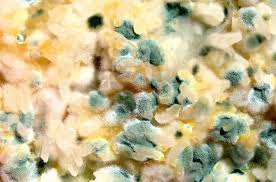Bartonella: A Lyme Co-Infection

Bartonella: A Lyme Co-infection
In this blog, we will look at bartonella. You will learn:
- What bartonella is and how it compares to Lyme Disease
- How bartonella is spread among humans (hint: it is not just from ticks)
- Why bartonella can become chronic and trigger mood, brain, and behavioral problems
- How a bartonella infection can be addressed
Do you know what bartonella is and how it spreads? Do you know why Lyme Disease and its co-infections are becoming increasingly common? If you want to know more about this growing threat and how to best optimize your health, then this blog is for you. Please read on for answers!
** Please note: If you want the longer, more detailed version of this article, then please click here **
What is Bartonella?
Bartonella is a bacterium that causes the disease Bartonellosis. It can infect humans and animals, including cats and dogs, and cause Bartonellosis. In recent years, bartonella infections are reported to be on the rise (Álvarez-Fernández A, 2018).
What we call the bartonella bacteria is actually approx. 15 different bacterial species (Columbia Univ., 2022). 38 different bartonella species have been detected in humans and animals and 13- 15 bartonella species cause disease in humans (Álvarez-Fernández A, 2018).
The severity of bartonella infection is related to the patient’s immune status and how immune-compromised they may or may not be (Angelakis E, 2014). Many human bartonella infections are poorly understood. It is possible that some of the bartonella bacterial species are non-pathogenic and do not cause symptoms, at least in immunocompetent people with a strong immune system (Columbia Univ., 2022). That being said, in our providers experience, chronic bartonella infections can be found in some who are immunocompetent.
Is Bartonella the Same as Lyme Disease?
Bartonella is a co-infection of Lyme Disease. A co-infection is a simultaneous infection by two or more pathogens that cause disease. A Lyme Disease co-infection is when a person is simultaneously infected with Lyme Disease and one or more of the other vector-borne diseases. Co-infections may actually be more common than a single infection.
- In a survey of over 3,000 patients with chronic Lyme Disease, over 50% reported confirmed co-infections, with 30% having 2 or more co-infections (Lymedisease.org, 2014).
- The most common co-infections reported with Lyme Disease are babesia (32%), bartonella (28%) and rickettsial illnesses (26%) (Lymedisease.org, 2014).
Co-infections may explain why some people with Lyme remain chronically ill, even after treatment.
What are the Symptoms of a Bartonella Infection?
The symptoms of bartonella can vary from mild to severe and life-threatening. Bartonella symptoms usually begin 5 to 14 days after infection (Lymedisease.org, 2022). The early, common symptoms include fever, headaches, fatigue, poor appetite, brain fog, muscle pain and swollen glands around the head, neck and arms. Bartonellosis may include a rash that looks like stretch marks from pregnancy.
Other common symptoms include blurred vision, numbness in the extremities, memory loss, balance problems, tremors and even psychiatric issues or neurological symptoms.
Symptoms specific to cat scratch disease are swollen lymph nodes, a pustule (similar to a pimple) at the infection site and possibly fever. In rare cases, it can also cause complications affecting the brain, eye disorders, severe muscle pain, infections of the liver, spleen or bones.
How Serious is a Bartonella Infection?
Bartonella infection does not always cause obvious illness. Healthy people can test positive for bartonella but have no history of typical bartonella symptoms. The conventional medical view is that those who do get sick often develop only a mild case that usually resolves itself without treatment (NORD, 2020). That being said, due to the experience of our providers and many other Lyme literate doctors, chronic bartonella can be very difficult to diagnose, can impact people who are immunocompetent, and can trigger encephalopathy (brain function, structure, mood, and/or behavioral changes). As such, providers in our clinic recommend a base minimum treatment for any diagnosed bartonella treatment of at least an herbal protocol.
There are cases where bartonella can cause severe infection and symptom expression in some people. Immunocompromised patients, those undergoing immunosuppressive treatments for cancer, organ transplant patients and people with HIV/AIDS, are more likely to develop severe, life-threatening disease. Even healthy individuals can be impacted including brain changes but the symptom expression is often more subtle and less acute.
Bartonella can cause chronic infection. Some species of bartonella may lead to a chronic infection lasting months to years, and possibly also causing a range of neuropsychiatric symptoms (Balakrishnan et al. 2016). People may have relapses because the bartonella bacteria can persist and hide from the immune system (Lymedisease.org, 2022).
Severe and acute symptom expression are more common small children with less developed immune systems and people struggling with immune system dysfunction. Without treatment, a severe bartonella infection can be fatal.
How do people get Bartonella?
Bartonella has been found in 49 out of 50 US states (Lymedisease.org, 2022). It is a vector-borne disease. Bartonella bacteria are transmitted by fleas, sand flies, lice, biting flies and most likely ticks (Deng H, 2018). It is also transmitted by animal bites and scratches. Cats are often carriers of bartonella bacteria, hence the name ‘cat scratch disease’.
Cat scratch disease is caused by bartonella henselae and can result from a cat scratch or bite (Columbia Univ., 2022).
It is thought that ticks transmit it to humans but this is not entirely certain. The evidence for ticks as vectors of bartonella is circumstantial but strong: (Columbia Univ., 2022)
- People with tick bites and no known exposure to cats have acquired the disease.
- People who recall being bitten by ticks have been co-infected with Lyme and bartonella.
- Scientists have established that ticks can transmit bartonella to mice.
- But the ability of ticks to actually transmit bartonella to humans has not yet been specifically demonstrated (Columbia Univ., 2022).
- In a study of Western blacklegged ticks collected in California, 19.2% were carrying bartonella. Five different species of bartonella were detected (Lymedisease.org, 2022).
- The CDC says ‘There is no evidence that ticks spread bartonella infection to people’ (CDC, 2022).
- More research needs to be done to establish the role of ticks in spreading the disease.
Ticks are often infected with multiple pathogens that may be bacterial, viral or parasitic. One study found 45% of ticks were co-infected with up to 5 different pathogens (Lymedisease.org, 2022). This makes ticks a common vector of various diseases including Lyme co-infections.
Finally, a recent study suggests that bartonella may be passed from mother to unborn child through perinatal transmission (Lymedisease.org, 2022).
To Read About Blog Topic, Scroll Down
Want To Work With Our Clinic?
Do you have a chronic or mystery illness that no one has been able to help you with? Are you simply wanting to re-connect with a healthier version of yourself? It’s Time To Finally Feel Better!
How Common is Bartonella?
20,000 cases of bartonella henselae or cat scratch disease are reported each year in the US (Columbia Univ., 2022). Cat scratch disease caused by bartonella henselae infection occurs in approximately 1 per 10,000 persons (NORD, 2020). 33% of patients with cat scratch disease are 14 years old or younger (NORD, 2020).
Cat scratch disease occurs throughout the US and worldwide. The incidence is higher in regions with higher temperatures and humidity, which supports large flea populations (NORD, 2020). In the US, the majority of cases occur between the months of July – January and are higher in the South and lower in the West (NORD, 2020).
How is Bartonella Diagnosed?
Blood tests are used to diagnose bartonella infections. They test for antibodies. However, false negatives occur. One study found a positive result in only 30% of patients who had a Bartonella infection confirmed by a PCR test (Columbia Univ., 2022).
Cross reactions may occur with antibodies to other infections such as chlamydia and rickettsial, another Lyme co–infection (Columbia Univ., 2022). Given the cross-reactivity of the bartonella antibody tests, a PCR test may be a more reliable test for bartonella infection (Columbia Univ., 2022).
Western blot tests appear to have greater specificity for bartonella, meaning there are fewer false negative results.
It can be tricky to diagnose as tests for bartonella may be negative one time and positive another (Lymedisease.org, 2022).
What is the Treatment for Bartonella?
To date, no single treatment is effective for all bartonella-associated diseases (Angelakis E, 2014).
Cat scratch disease usually has a very good prognosis, with no long-term health effects. (NORD, 2020). It usually resolves itself without any treatment, within 2 to 4 months. Medicine is only given if needed. Fever reducers and pain relievers / analgesics may be given if required (NORD, 2020).
Antibiotic treatment is usually not necessary for uncomplicated cases of bartonella henselae infection. Evidence does not show that antibiotics shorten the duration of the disease.
Antibiotics may be considered for severe or systemic disease. For complicated bartonella infections infecting the central nervous system, antibiotics are needed. The optimal length for this treatment has yet to be determined, but guidelines suggest 4-6 weeks (Breitschwerdt 2014). Typically, several antibiotic medications are used in combination (Lymedisease.org, 2022). Faster reduction of lymph node size has been seen with a 5-day course of azithromycin (NORD, 2020).
A longer duration of treatment with antibiotics is recommended for immunocompromised patients and when the liver or other organs are involved (NORD, 2020).
There are also herbal approaches to take with bartonella. Like with Lyme Disease, various combinations of herbs such as oregano and Japanese knotweed can often be more effective than antibiotics. We will discuss treatment for bartonella infections in a future blog so keep an eye out!
Summary
- Bartonella is the bacteria that causes cat scratch disease. It is a Lyme Disease co-infection. This means it can be transmitted at the same time as Lyme is transmitted.
- Bartonella is commonly transmitted via fleas, sand flies, lice, biting flies and most likely ticks (Deng H, 2018). It is also transmitted by animal bites and scratches. Cats are often carriers of bartonella bacteria, hence the name ‘cat scratch disease’.
- Common symptoms include fever, headaches, fatigue, poor appetite, brain fog, muscle pain and swollen glands around the head, neck and arms.
- Bartonella can be tricky to treat because the bacteria live primarily inside blood vessels. The bacteria invade red blood cells and the lining of the blood vessels and remain protected from the immune system.
- Blood tests are used to diagnose bartonella infections. PCR test may be a more reliable test for bartonella infection (Columbia Univ., 2022).
- No single treatment approach is effective for all bartonella-associated diseases. Antibiotics may be considered for a severe case. Herbal treatment approaches are recommended in nearly all cases.
- In Functional Medicine, we use a multifaceted approach to working with bartonella including herbs, neutraceuticals, methylene blue, peptides, and more. As with Lyme Disease, various combinations of herbs such as oregano, cryptolepis, and Japanese knotweed together with methylene blue with or without antibiotics can be helpful.
In our clinic, we are Lyme-literate doctors. We are experts at identifying root causes, diagnosing conditions like bartonella, Lyme co-infections, Lyme Disease and helping people to address the root causes of illness and improve their health. We treat Lyme Disease and Lyme co-infections symptoms, with both natural and pharmaceutical approaches, depending on the individual case.
** Please stay tuned for our next Blog! **
As always, please get in touch with us. Book a free health evaluation call with us today to see how we can help you with your concerns. We can answer your questions and help you book an initial consult with one of the functional medicine doctors in our clinic.
Are You Suffering From A Chronic Illness?
Does your current health situation look like this…
- Do you feel that you have tried many things and either nothing works, or the treatment does not hold?
- Have you been told that there is nothing that can be done to reverse your illness and you just need to manage symptoms?
- Does your illness impact your work, your family, your happiness and your social life?
We specialize in finding answers and solutions for complicated chronic illness when people feel like they have tried everything. If this sounds like you, book a free call with us to see if we are the right fit for your health goals.
Dr. Miles has spoken for the following organizations:
















